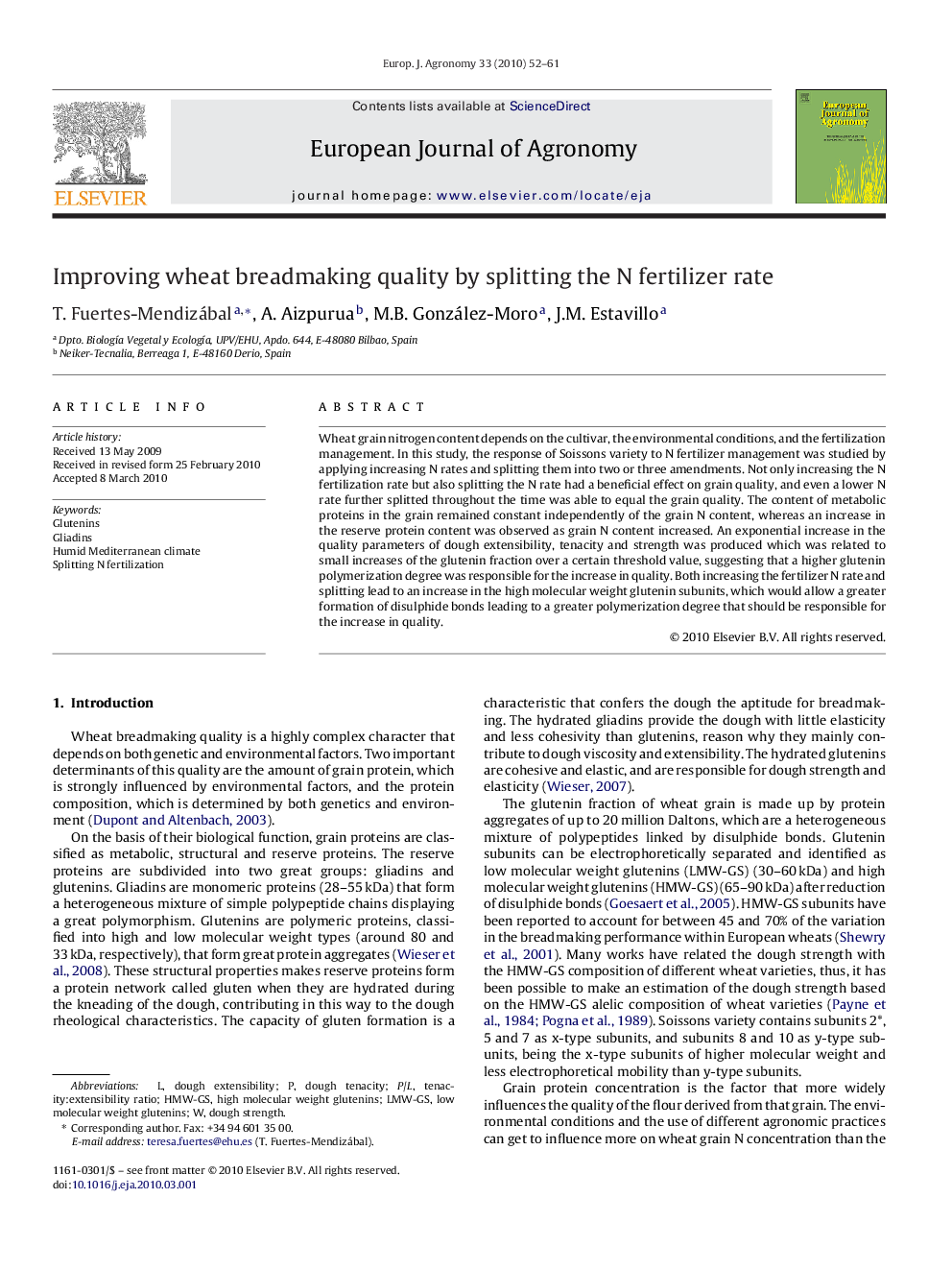| Article ID | Journal | Published Year | Pages | File Type |
|---|---|---|---|---|
| 4509231 | European Journal of Agronomy | 2010 | 10 Pages |
Wheat grain nitrogen content depends on the cultivar, the environmental conditions, and the fertilization management. In this study, the response of Soissons variety to N fertilizer management was studied by applying increasing N rates and splitting them into two or three amendments. Not only increasing the N fertilization rate but also splitting the N rate had a beneficial effect on grain quality, and even a lower N rate further splitted throughout the time was able to equal the grain quality. The content of metabolic proteins in the grain remained constant independently of the grain N content, whereas an increase in the reserve protein content was observed as grain N content increased. An exponential increase in the quality parameters of dough extensibility, tenacity and strength was produced which was related to small increases of the glutenin fraction over a certain threshold value, suggesting that a higher glutenin polymerization degree was responsible for the increase in quality. Both increasing the fertilizer N rate and splitting lead to an increase in the high molecular weight glutenin subunits, which would allow a greater formation of disulphide bonds leading to a greater polymerization degree that should be responsible for the increase in quality.
